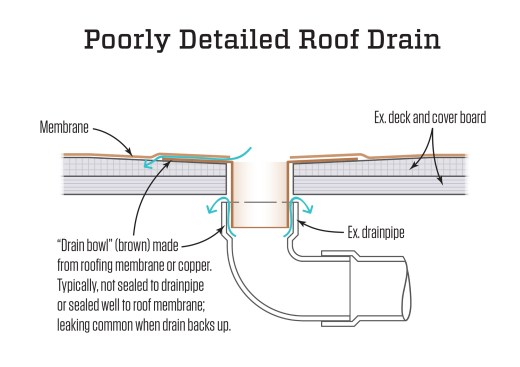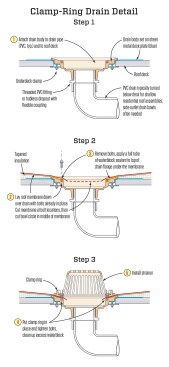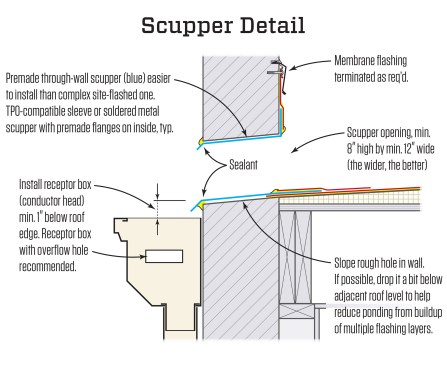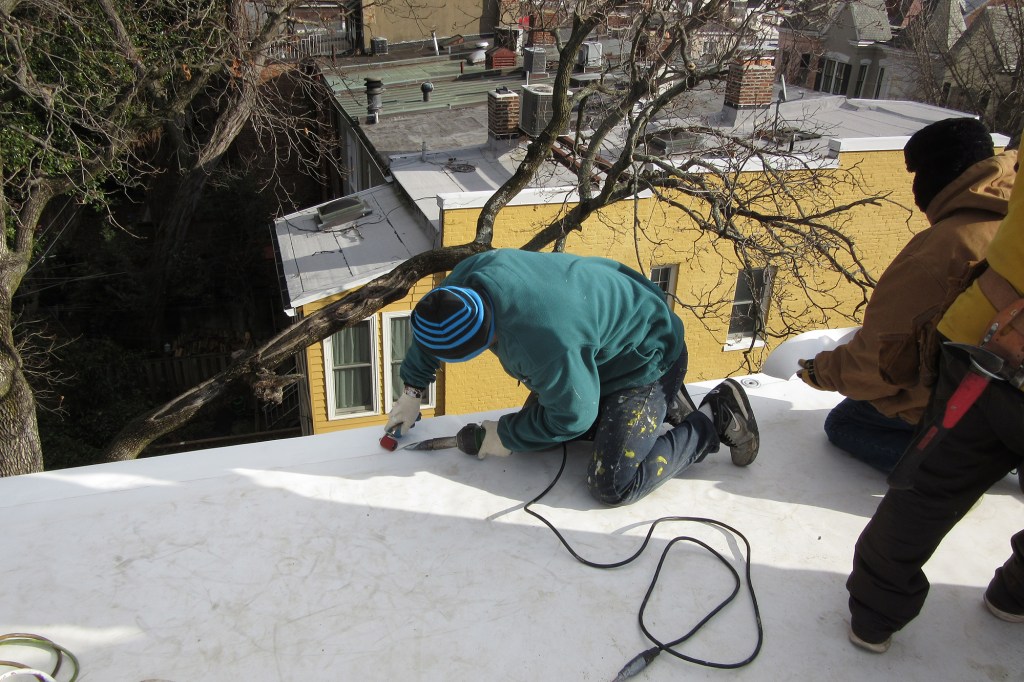Roof Drains
I’m not a fan of roof drains: They’re high maintenance, they tend to clog, and there are many ways to do them wrong. I’ve seen a lot of leaky roof drains. Typically, what happens is that the pipes clog, and if you don’t have a perfect seal between the drainpipe and the roofing, the water will back up, overflow the pipe, and run into the house.

Common flaws in roof drain detailing allow leaks between the membrane and the drain body, and leaks between the drain body and the drainpipe.
Clamp-ring drains are designed to seal the membrane to the top of the drain body. If the pipe backs up, water can’t get into the house, and it runs off the roof through the overflow. These are the only acceptable drains on roofs, but whenever there’s a choice, I prefer an open roof edge to any kind of roof drain.

To avoid leaks between the drain body and the drainpipe, the author recommends using a clamp-type drain that locks the membrane into the drain body. Watertight pipe connections are also crucial for preventing water from leaking into the building.
Scuppers
I feel the same way about scuppers as I do about roof drains: They’re tricky to detail, and the smaller they are, the more prone they are to clogging with leaves and debris. I have seen 4-inch-tall openings clog; we now recommend 8 inches for scupper opening height and at least 12 inches for width (the wider, the better).

Photos by Doug Horgan; Illustrations by Tim Healey
